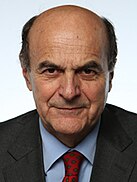
Back Eleiciones xenerales d'Italia de 2013 AST Eleccions legislatives italianes de 2013 Catalan Parlamentní volby v Itálii 2013 Czech Etholiad cyffredinol yr Eidal, 2013 Welsh Parlamentswahlen in Italien 2013 German Ιταλικές γενικές εκλογές 2013 Greek Elesiòṅ pulìtichi itagliàni dal 2013 EML Elecciones generales de Italia de 2013 Spanish Italian parlamenttivaalit 2013 Finnish Élections parlementaires italiennes de 2013 French
| |||||||||||||||||||||||||||||||||||||||||||||||||||||||||||||||||||||||||||||
All 630 seats in the Chamber of Deputies 316 seats needed for a majority All 315 elective seats in the Senate 160 seats needed for a majority[a] | |||||||||||||||||||||||||||||||||||||||||||||||||||||||||||||||||||||||||||||
|---|---|---|---|---|---|---|---|---|---|---|---|---|---|---|---|---|---|---|---|---|---|---|---|---|---|---|---|---|---|---|---|---|---|---|---|---|---|---|---|---|---|---|---|---|---|---|---|---|---|---|---|---|---|---|---|---|---|---|---|---|---|---|---|---|---|---|---|---|---|---|---|---|---|---|---|---|---|
| Opinion polls | |||||||||||||||||||||||||||||||||||||||||||||||||||||||||||||||||||||||||||||
| Registered | 46,905,154 (C) · 42,270,824 (S) | ||||||||||||||||||||||||||||||||||||||||||||||||||||||||||||||||||||||||||||
| Turnout | 35,270,926 (C) · 75.2% ( 31,751,350 (S) · 75.1% ( | ||||||||||||||||||||||||||||||||||||||||||||||||||||||||||||||||||||||||||||
| |||||||||||||||||||||||||||||||||||||||||||||||||||||||||||||||||||||||||||||
 Election results maps for the Chamber of Deputies (on the left) and for the Senate (on the right). On the left, the color identifies the coalition which received the most votes in each province. On the right, the color identifies the coalition which won the most seats in respect to each Region. Red denotes Centre-left coalitions, Blue the Centre-right coalition, Yellow the Five Star Movement, and Light Blue the Aosta Valley regional coalition. | |||||||||||||||||||||||||||||||||||||||||||||||||||||||||||||||||||||||||||||
| |||||||||||||||||||||||||||||||||||||||||||||||||||||||||||||||||||||||||||||
General elections were held in Italy on 24 and 25 February 2013 to determine the 630 members of the Chamber of Deputies and the 315 elective members of the Senate of the Republic for the 17th Italian Parliament.[3][4][5] The centre-left alliance Italy Common Good, led by the Democratic Party (PD), obtained a clear majority of seats in the Chamber of Deputies thanks to a majority bonus that effectively trebled the number of seats assigned to the winning force and narrowly defeated the centre-right alliance of former prime minister Silvio Berlusconi in the popular vote. Close behind, the new anti-establishment Five Star Movement of comedian Beppe Grillo became the third force, well ahead of the centrist coalition of outgoing Prime Minister Mario Monti. In the Senate, no political group or party won an outright majority, resulting in a hung parliament.[6][7]
In April 2013 a grand coalition was formed, consisting of Italy Common Good, the Berlusconi coalition and the centrists.[8] Berlusconi and his allies withdrew support of the coalition and formed a new Forza Italia six months later, which meant that the PD dominated the government coalition until the 2018 Italian general election.
Cite error: There are <ref group=lower-alpha> tags or {{efn}} templates on this page, but the references will not show without a {{reflist|group=lower-alpha}} template or {{notelist}} template (see the help page).
- ^ "BERSANI Pier Luigi - MDP-LU". Camera.it. Retrieved 4 March 2018.
- ^ "Eletti Alfabetico" (PDF). Retrieved 4 March 2018.
- ^ "Ministry of the Interior" (in Italian). Elezioni.interno.it. Archived from the original on 23 September 2013. Retrieved 26 February 2013.
- ^ "Italy election campaign begins as parliament dissolved". BBC News. 22 December 2012.
- ^ Gavin Jones; James Mackenzie (22 December 2012). "Italy dissolves parliament, Monti mulls future". Reuters.
- ^ "Italian election results: gridlock likely – as it happened". The Guardian. 26 February 2013. Retrieved 27 February 2013.
- ^ "Italy struggles with 'nightmare' election result". BBC News. 26 February 2013. Retrieved 27 February 2013.
- ^ "Deal reached on new Italian government". Al Jazeera English. 27 April 2013. Retrieved 10 January 2014.



